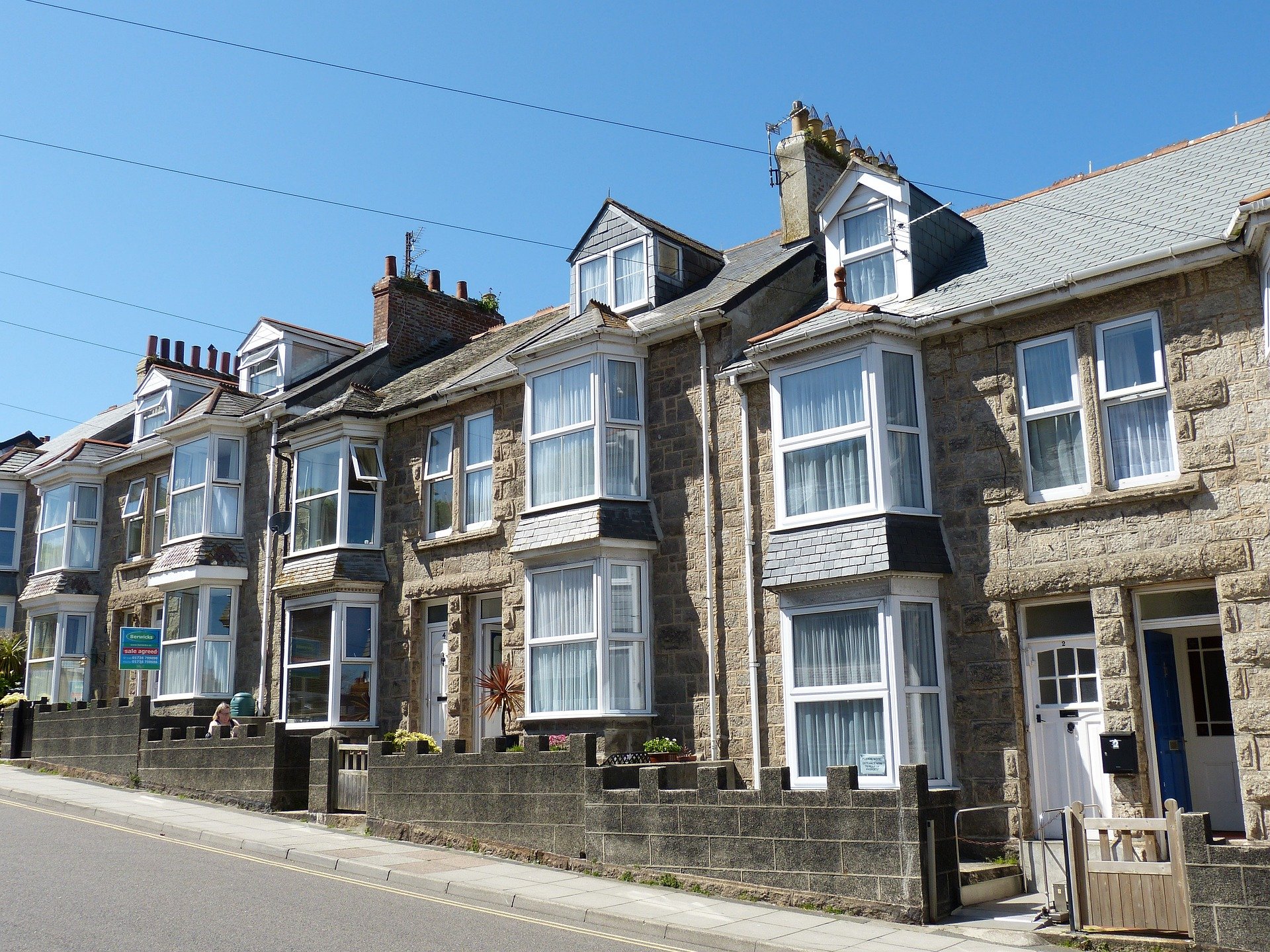Should I Buy a Terraced or Semi-Detached House?
When it comes to buying a home in the UK, the choices can be overwhelming. Among the most common types of properties on the market are terraced and semi-detached houses. Each type has its own unique benefits and drawbacks, making the decision difficult for many. Are you looking for a more affordable option that still provides the space you need? Or is privacy a priority for you? This article will dive deep into the differences between terraced and semi-detached homes, helping you figure out which one suits your lifestyle, needs, and budget best.
“Whether you’re an investor or a homeowner, the type of property you choose will significantly impact your future. Understanding the pros and cons of terraced and semi-detached homes is key to making the right decision,” says Jamie Johnson, CEO of FJP Investment. Let’s explore the key differences and how each type of home can cater to your individual circumstances.
What is a Terraced House?
A terraced house, commonly referred to as a “row house” in some parts of the world, is part of a row of identical houses that share walls on both sides with their neighbours, except in the case of the end-of-terrace house, which only shares one wall. This design has been around since the Georgian era and is common in both urban and suburban areas in the UK. Terraced houses are known for their uniform look, often built in long rows, giving neighbourhoods a distinct and cohesive aesthetic.
These properties are usually more compact and tend to be less expensive compared to semi-detached or detached houses. Because they share walls with their neighbours, terraced homes can be more energy-efficient, as less heat escapes through external walls. However, this proximity also means that privacy and noise insulation may be compromised.
What is a Semi-Detached House?
A semi-detached house, often called a “semi,” is a type of home that shares one wall with another house but is otherwise detached. The design creates a balance between the privacy of a detached house and the affordability of a terraced home. You only have one neighbour directly next to you, which often means less noise transfer compared to terraced houses. Semi-detached homes usually come with larger plots of land, including a bigger garden and more parking space, compared to terraced properties.
Semi-detached homes are a popular choice in suburban areas, offering more space and privacy without the hefty price tag of a detached house. They often have a broader range of layouts and sizes, giving buyers more flexibility when it comes to customising their living space.

Price and Affordability
One of the most significant factors when choosing between a terraced and semi-detached house is the price. Generally, terraced homes tend to be more affordable than semi-detached houses. In many areas across the UK, particularly in major cities like London, terraced houses are often the most affordable option on the market. They provide a good opportunity for first-time buyers or those on a tighter budget to get onto the property ladder.
Terraced houses also tend to be more compact, which can lower both the upfront cost of purchase and the ongoing costs of utilities and maintenance. However, the price can vary depending on whether you are looking at a mid-terrace (in the middle of the row) or an end-terrace house, which typically commands a premium as it has more land and only shares one wall with a neighbour.
On the other hand, semi-detached homes are usually more expensive due to their larger size and the additional land they typically come with. While they may require a bigger initial investment, they also tend to retain their value well, particularly in suburban areas where families seek extra space and privacy. Investors may find semi-detached homes appealing for their higher rental yields and potential for capital appreciation.
Energy Efficiency and Maintenance
Energy efficiency is another essential factor to consider. Because terraced homes share walls with neighbours on both sides, they can be more energy-efficient than semi-detached houses. The fewer external walls a house has, the less heat is likely to escape, which means terraced homes often have lower heating bills. This is particularly true for mid-terraced houses, which are sandwiched between two other properties, providing excellent insulation.
However, when it comes to maintenance, terraced homes can sometimes be more challenging. For example, if you live in the middle of a terrace, accessing parts of your roof for repairs can be tricky. Additionally, because all the homes in a terrace share structural elements, such as walls and roofing, any problems with your neighbour’s home could affect yours as well.
Semi-detached houses, while slightly less energy-efficient than terraced homes, offer greater control over maintenance. With one side of the house completely detached, you are only responsible for your own structure, reducing the likelihood of disputes over shared elements. Semi-detached homes also often have more space for external upgrades, such as adding solar panels or improving insulation, which could help make them more energy-efficient over time.
Privacy and Noise Considerations
One of the biggest concerns for many homebuyers, especially those who value peace and quiet, is the issue of noise. Terraced homes, due to their shared walls on both sides, can sometimes suffer from noise transfer between neighbours. If the walls are not well-insulated, you might hear your neighbour’s conversations, footsteps, or even TV programmes. For some people, this lack of privacy is a deal-breaker.
That being said, modern terraced houses or those that have been refurbished often come with better soundproofing, which can reduce this problem significantly. Additionally, mid-terrace houses may offer some advantages in terms of security, as having neighbours on both sides can provide a deterrent to burglars.
Semi-detached houses, with only one shared wall, offer a higher level of privacy and are generally quieter than terraced homes. The extra space on the other side of the house means there’s less chance of hearing your neighbours through the walls. Furthermore, semi-detached homes often come with front and back gardens that provide a buffer from the surrounding area, adding to the feeling of seclusion.

Space and Layout Differences
When comparing the space and layout of terraced and semi-detached houses, semi-detached homes generally come out on top. Semi-detached properties usually offer larger rooms and more living space compared to terraced homes. This additional space can be a significant advantage for families or those who need more room for hobbies, work-from-home setups, or storage.
Terraced houses, particularly mid-terrace properties, tend to have more compact layouts. However, many terraced homes have been extended or renovated to include more modern features, such as open-plan living spaces or loft conversions. End-of-terrace homes, in particular, often come with larger gardens and more flexibility for extensions compared to mid-terrace houses.
While semi-detached homes typically offer more space both inside and out, it’s important to remember that they also come with higher associated costs. The larger garden and additional square footage mean more maintenance and higher utility bills. However, for families or those planning to grow into their home, this extra space can be worth the investment.
Investment Potential
Both terraced and semi-detached homes have good investment potential, but which one is the better option for you depends on your goals as a buyer or investor.
Terraced houses, particularly in urban areas, often appreciate well over time due to their affordability and proximity to city centres. These properties are also in high demand for rentals, as they tend to attract young professionals and smaller families looking for affordable living options close to amenities. The compact size of terraced homes can also make them easier to rent out or sell, as they appeal to a wide range of buyers.
Semi-detached homes, while more expensive initially, can also provide excellent long-term value. They tend to attract a different type of buyer—families looking for space and privacy. These homes are also popular in suburban areas where larger plots and garden space are more desirable. Semi-detached homes usually command higher rental yields compared to terraced homes, and they tend to appreciate well in value, particularly in areas with good schools and transport links.
For investors, the choice between a terraced and semi-detached property should come down to location, budget, and the target rental market. Both types of properties have the potential to deliver good returns, but semi-detached homes generally offer more flexibility in terms of modifications and extensions, which can increase their value over time.
Conclusion
Choosing between a terraced and a semi-detached house comes down to your personal priorities, lifestyle, and budget. If you’re looking for an affordable option that’s close to city amenities, a terraced house might be the best fit for you. On the other hand, if you value privacy, space, and are willing to pay a bit more, a semi-detached home could be the right choice.
Both options have their advantages: terraced homes are often more affordable and energy-efficient, while semi-detached houses offer more space and privacy. Consider what’s most important to you and how you envision your life in the home you choose. Whether you’re a first-time buyer, a growing family, or a property investor, understanding the key differences between these two popular types of homes will help you make an informed decision that suits your needs.
ARE YOU READY TO START INVESTING?
Subscribe to our mailing list now for exclusive deals, investment guides and the latest information from the property market.







